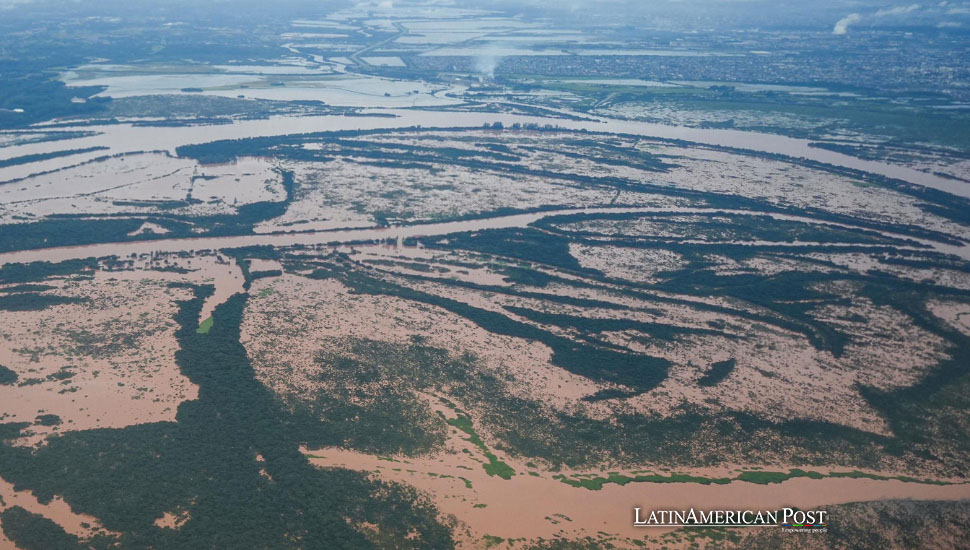Brazil’s Rio Grande do Sul Battles Severe Rain Harvest Disruptions

In Brazil’s Rio Grande do Sul, torrential rains are wreaking havoc on the soybean and corn harvest, causing significant delays and damage in the country’s crucial agricultural region.
In the southern state of Rio Grande do Sul, Brazil’s second-largest soybean producer and a significant corn supplier, farmers face severe setbacks as unexpected torrential rains disrupt the critical final stages of the harvest. This inclement weather has slowed farm operations and led to considerable crop losses, complicating the economic outlook for one of Brazil’s key agricultural regions.
Unusual Weather Patterns Disrupt Harvest
Historically, soy farmers in Rio Grande do Sul would have harvested about 83% of their crops by this time of year. However, according to the latest reports from the state crop agency Emater, only 76% of the soybean fields have been cleared, despite a ten percentage point increase from the previous week. The unusual weather patterns have left farmers scrambling to salvage what they can from their soaked fields.
Marco dos Santos, a Rural Clima meteorologist, highlighted the extent of the disruptions. “Torrential rains in the Rio Grande do Sul have already caused numerous disruptions and losses,” he noted, mentioning that not only soybeans but also corn and rice crops have suffered. The ongoing heavy rainfall, expected to persist through the coming weekend, has led to flooding in rural and urban areas, blocking roads and destroying critical infrastructure.
The situation in Southern Brazil has caught the attention of commodity markets worldwide. As news of the flooding spread, Chicago soybean prices hit their highest point in more than three weeks. This price spike reflects concerns over supply disruptions in one of the world’s most important soybean production areas.
The forecast offers little relief in the immediate future. Santos predicts more rainfall starting May 9 due to a new cold front, likely exacerbating conditions. “Even lower amounts of rain on already saturated soil can lead to chaos,” he added, painting a grim picture for the days ahead.
Economic Impact of Weather Events
The impact of the weather extends beyond the fields to the broader economy. Adriano Gomes, a grains analyst at consultancy AgRural, explained the longer-term consequences of such weather events. “These voluminous rains, with no sunny breaks to harvest the grains, always end up causing quality losses,” he said. This not only affects the quantity of the harvest but also degrades the quality of the crops, potentially reducing the market value of the yield.
This season, they had started with high hopes, with the national crop agency Conab predicting a 68% increase in soybean production over the previous season. Emater even projected a record crop of 22.25 million metric tons, a jump of 71.5% from last year. However, these optimistic forecasts are now under threat due to the relentless downpours.
The rains have had a devastating human toll as well. Local authorities reported at least 13 deaths and 21 people missing as a result of the flooding, underscoring the severity of the situation. The state government issued warnings that the problem was critical and could deteriorate further.
Agriculturally, while soybeans have been hit hard, corn harvesting has fared slightly better. Emater says about 83% of the corn area has been harvested, marking a slight increase from the previous week. This suggests that while all crops are affected, the varying degrees of impact depend on the crop type and the specific conditions of the fields.
Latin America’s Environmental and Economic Challenges
As the Rio Grande do Sul grapples with these challenges, the situation highlights Latin America’s broader environmental and economic issues. Climate variability and extreme weather events pose ongoing risks to agriculture, a critical economic sector for many countries in the region. The situation in Rio Grande do Sul reminds us of the vulnerability of agricultural economies to climate extremes and the need for robust strategies to mitigate these risks.
Also read: Brazil Tackles Credit Card Debt with New Interest Rate Caps
Looking ahead, the state, the farmers, and the Brazilian agricultural sector face uncertainty. The immediate focus is weather forecasts and efforts to drain and salvage fields. Still, the long-term challenges will involve rethinking agricultural practices and diversifying crops to withstand such unpredictable weather patterns. For now, Rio Grande do Sul’s farmers brace themselves for more rain and hope for a break in the clouds that will allow them to return to their fields and recover from a season that has tested their resilience like never before.





